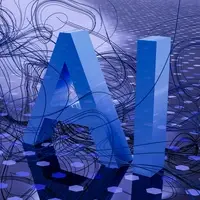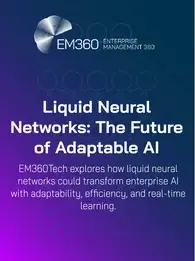
Cybersecurity. Data disaster recovery. IT skills gap. Rethinking costs. Green IT/ESG. Deeper data-driven insights. All of these tech-driven trends will shape 2024. All will have a financial impact on enterprises amid continuing turbulent economic times. All will affect the operational efficiencies of enterprises worldwide. All have an on-ramp with enterprise storage.
While overlooking or miscalculating these trends will be costly for companies stuck in the status quo, understanding and leveraging these trends will unlock new value for innovative enterprises. It will also safeguard against escalating threats in the digital world, and better balance cost savings, sustainability, and automation. Technology in the enterprise space never stops evolving, but prioritising the right areas of focus can determine whether you’re among the leaders of the pack or an also-ran.
Embracing the broader context around IT, enterprise infrastructure, cybersecurity, and enterprise storage ensures that storage is no longer viewed in a silo.
Zeroing in on the connection points that these tech trends reveal will help set the agenda for technological advancement in 2024. Here are six trends that we have identified as significant.
Tech Trend #1: Cybersecurity with a “silver” enterprise storage lining
With the projected annual cost of cybercrime expected to be £7.5 trillion in 2024, cybersecurity will continue to be one of the most important issues for C-level leaders in enterprises globally. It is no wonder that in the June 2023 survey of CEOs by Fortune that the number two threat to their companies cited by CEOs was cybersecurity. The proliferation of cyberattacks, especially with the augmented capabilities of AI in the hands of cybercriminals who want to wreak the most damage on corporations as possible, will rattle enterprises that are not prepared in 2024. But there is the proverbial “silver lining” – or, in this case, the cyber storage resilience lining. Cyber resilience, which is provided by primary storage and secondary storage systems, will be ever-increasingly coupled with other cybersecurity products to combat cyberattacks, such as ransomware and malware, much more effectively.
There already has been rapidly increasing interest in cyber detection, immutable snapshots, logical air-gapping, fenced forensic environments, and rapid recovery of data after a ransomware or malware attack. The stakes could not be higher. IT people who didn’t care about cyber detection or immutable snaps or fenced forensic environments for data two or three years ago will be keenly focused on these key success factors to fight back against the enormous threat of cybercriminals. Ultimately, cyber storage resilience must be part of the overall corporate cybersecurity strategy of an enterprise.
Tech Trend #2: Data disaster recovery amid a “hurricane” of cyberattacks
Disaster recovery is not only about natural disasters. “Data disasters” have arisen with the potential to bring enterprises across all industries to their knees. A cyberattack, such as a ransomware or malware attack that destroys or takes all of the enterprise’s data “hostage” for ransom, is a huge disaster on par with a ferocious hurricane or earthquake in terms of the operational disruption and the business impact.
Data disasters are game changers for disaster recovery and business continuity. It’s not simply about having multiple sites or an off-ramp to the public cloud. Rapid recovery from a data disaster tests the true resilience and mettle of an enterprise. The emphasis on preparedness for “data disasters” will get stronger in 2024. Just as companies have disaster recovery teams or emergency response teams in place to respond to natural disasters, more enterprises will be more proactive by bolstering their teams and their capabilities to respond to data disasters, which are becoming more commonplace in the 21st century. Yet, enterprises don’t have to be caught off-guard when they tap into the full potential of enterprise storage.
Tech Trend #3: Plugging the IT skills gap by equipping IT admins with autonomous automation
The global IT skills gap is well documented and continues to grow and grow and grow. In simple terms, there are not enough qualified IT professionals with the know-how and experience to run complex IT systems and manage highly interconnected deployments of IT solutions. In a survey conducted by the human resource recruiting company Robert Half recently, 90% of tech managers with hiring responsibilities reported over the past year that they are experiencing real challenges identifying and hiring skilled IT candidates. The Financial Times has reported that “technology experts are in short supply everywhere, but in America, in particular, the situation is acute.” The IT skills gap is profoundly impacting enterprises that depend on the IT function. And digital transformation is only accelerating, which exacerbates the problem.
The trend for 2024 will be the increasing shift to adopt autonomous automation, which means an admin can manage something like enterprise storage when it would have taken multiple, high-skilled tech wizards a few years ago to manage it. This also involves AIOps and the automating of the technical support process to simplify technical management. Consolidation is also part of the fabric of this trend to make the data infrastructure less manpower-intensive and more efficient operationally, while reducing costs. IT decision-makers will also further explore set-it-and-forget-it approaches, which reduce the reliance on manual IT skills. We also expect to see IT solution providers, technical advisors, and service providers step in to fill parts of the IT skills gap.
Tech Trend #4: Reducing certain IT costs to free up money for other projects, such as AI
The rush to deploy and operationalise AI in enterprises has created a need for more funding; however, IT budgets will likely only go up between 5% and 8% in 2024. Gartner projects 6.8% growth, while IDC expects an 8% increase in IT spend this year. The trend in the new year will be to find areas of IT where expenses can be reduced. This will free up money and resources to focus on those strategic new projects, such as AI or cybersecurity, among others. This will fund the future of enterprise IT beyond the incremental IT budget increases.
One of the prime areas where large enterprises can save dramatically on their CAPEX and OPEX budgets is storage for applications and workloads. Sure, they may have to look at an alternative to their large incumbent storage product provider that they have been working with for years, but when they partner with an enterprise storage vendor that specialises in storage consolidation, autonomous automation, and the ability to deploy and then leave the storage to run on its own (“set-it-and-forget -it”), the amount of savings can be staggering – as big as 3X for global enterprises. Those cost savings can be redirected to fuel the enterprise’s harnessing of AI/machine learning to move the business forward and gain substantial benefits.
Tech Trend #5: Becoming easier to be Green IT
New strategies for data centres to be environmentally friendly with ecologically sound policies are emerging in ways that are making it easier to achieve green IT objectives. For example, in enterprise storage, it’s now as simple as ever to consolidate 24 storage arrays down to four arrays, or significantly increasing the efficiency of data centre floor space utilisation from 450 floor tiles down to only 50 floor tiles. In these specific examples, energy usage is also reduced exponentially, which is a big deal because data centres are notorious for using huge amounts of power. Storage consolidation is one of multiple strategies that are facilitating initiatives to make data centres greener.
Being able to apply a business justification to green IT is making it easier for IT leaders to “rationalise” the investment in green initiatives, such as consolidating storage or adopting AIOps to streamline operations or having higher capacity systems that are more energy-efficient with a lower carbon footprint. The expectations for enterprises to meet Environmental Social and Corporate Governance (ESG) requirements will continue to be in play around the world – and IT leaders will need ways to get quick wins. Storage consolidation within large enterprises is like low-hanging fruit.
Tech Trend #6: Increasing deeper data-driven insights across the enterprise infrastructure, including storage arrays
Data-driven insights are not new, but what is emerging for 2024 is a trend for deeper insights across a vaster landscape of the data infrastructure and overall IT implementations. This broader landscape as an active source of data-generated knowledge now includes enterprise storage, which is infinitely much more than just a repository for data. IT leaders are realising that they can obtain extremely useful insights from the storage infrastructure. This data can then be fed into a central collection of all IT-related data to come up with multi-dimensional insights that can accelerate digital transformation, reduce IT costs, provide competitive advantages, and drive business growth.
This deepening of data insights reflects a change from reactive to proactive navigation of the evolving expectations of customers. The true value of storage-led insights will only begin to be tapped into during 2024, but it will surely factor into defining moments in 2024.
---
About the Author: Eric Herzog
Eric Herzog is the Chief Marketing Officer at Infinidat. Prior to joining Infinidat, Herzog was CMO and VP of Global Storage Channels at IBM Storage Solutions. His executive leadership experience also includes: CMO and Senior VP of Alliances for all-flash storage provider Violin Memory, and Senior Vice President of Product Management and Product Marketing for EMC’s Enterprise & Mid-range Systems Division.













Comments ( 0 )